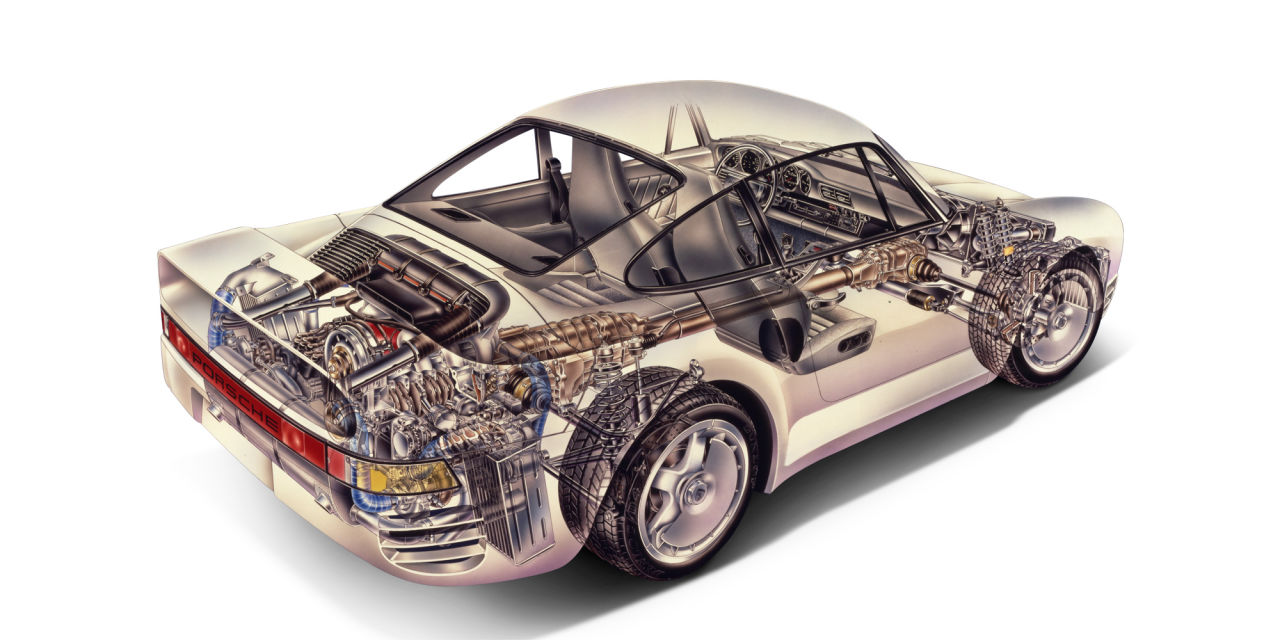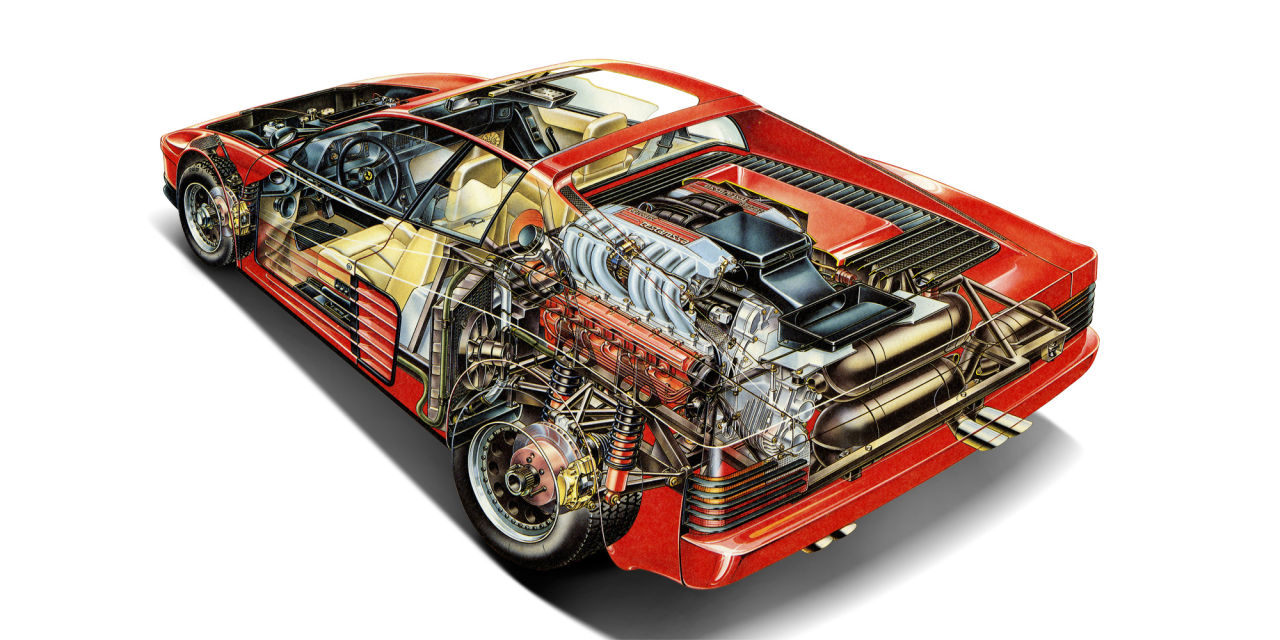
We need more Countachs and F40s and 959s, exotica capable of setting the world on fire. Because anything less is just a car. The Countach 5000 QV is an archetype: four-valve V12, six-figure sticker price, styling like a Grumman Autobot. Three decades later, the Aventador SV doesn't stray far. Good, we say. Life needs cooler doors, more alarming sensations.
1986 Lamborghini Countach
(Pictured above.) The supercar. Born of the Sixties, reared in the Seventies. But it wasn't until the Eighties, an era defined by indulging excess simply for excess' sake, that a blueprint for the modern supercar emerged. It called for more. Louder pipes. Fatter tires. Bigger wings.
1986 Porsche 959
Motorsport magazine called the 959 a "potpourri of technical exercises that will be applied to the range over the next 10 years." More like 30. Porsche's modern adaptive suspension, water-cooled heads, and hollow-spoke center-lock wheels all started here. The 959 proved the classic 911 shape, a high-revving flat-six, and that stubborn rear-engine layout could hover in the supercar stratosphere. The contemporary Turbo S is a spiritual successor, but every great 911 (including the new GT3 RS) has a pinch of the 959's magic.

1989 Ferrari F40
An F40 is red and only red, 2700 pounds of carbon-Kevlar wrapped around two buckets, one steering wheel, and a belligerently turbocharged V8.
There is no glove box, no stereo. For balance, the engine sits so close to midship that belt service necessitates removal of the firewall. What else would you expect from Enzo's magnum opus? The F40 made it okay for Ferrari supercars to exist divorced of racing intent. Without it, there is no LaFerrari.
1985 Ferrari Testarossa
We drove the Testarossa last year, again, to refresh our memories. This is what we thought of it: "This is a good car by any standard, not just in comparison with lesser cars of the era. The Testarossa is solid, with medium-heavy steering, right-now throttle response, decent power, and a quiet rumble from the mid-mounted, 5.0-liter, 390-hp flat-12. It has the classic Ferrari off-center pedals and straight-arm steering, so you find yourself in an upright, alert driving position that demands your attention. But it also boasts that clack-clack gated shifter, which makes up for a lot. Then you put your foot into it, and the engine that's subdued at low speed rises to its full height, blasting you forward with a surge of smooth, deliberate power.
"Enzo Ferrari famously said that aerodynamics were for people who couldn't build engines. Someone certainly saw which way the wind was blowing; the crazy mirrors and sharp edges on the Testarossa's flanks are a nod to that era's fleeting, jittery vibe. But the car's engine and chassis were designed with forever in mind."
From: Road & Track


Комментариев нет:
Отправить комментарий